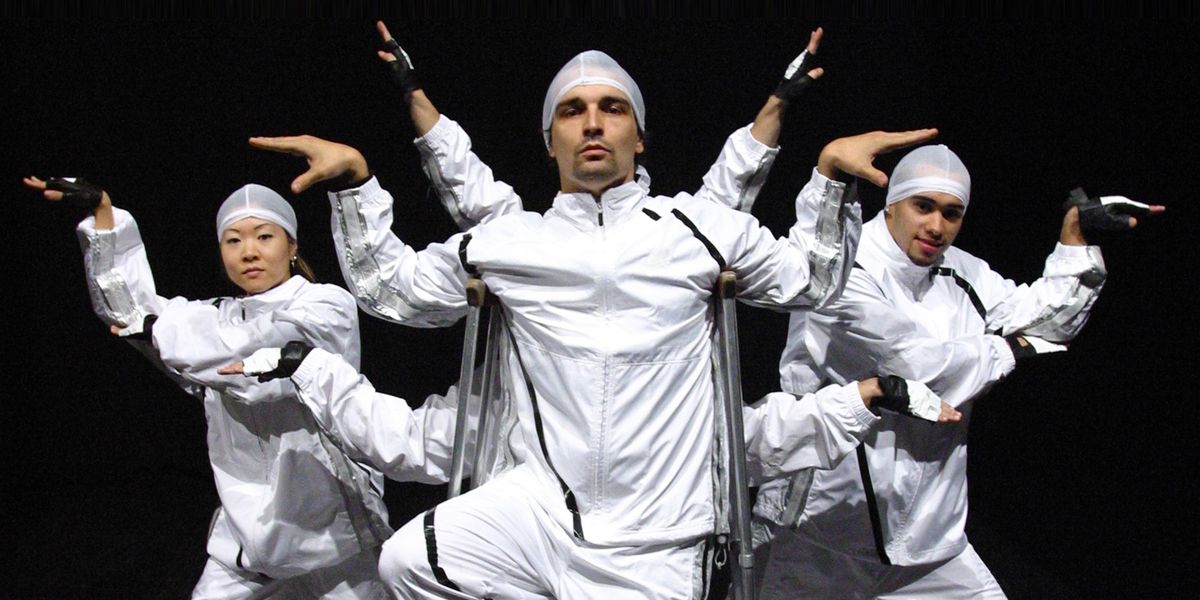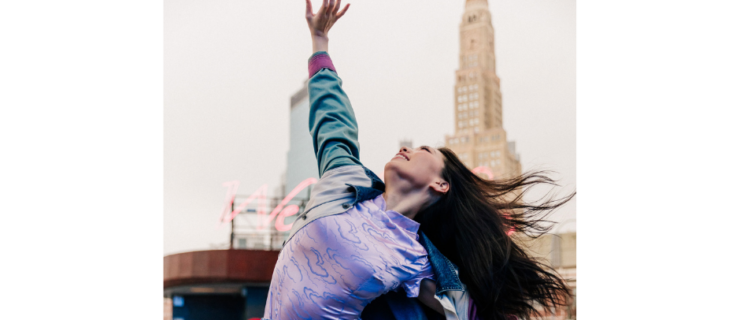For 20 Years, a Film Crew Followed Break-dancer, Skateboarder and Interdisciplinary Artist Bill Shannon
For the past two decades, interdisciplinary artist Bill Shannon has lived and worked in front of a camera. The documentary CRUTCH, premiering online November 11–19 at the DOC NYC festival, chronicles Shannon’s innovative performance career, which has included break dancing, skateboarding and multimedia installations around the world. The title refers to the crutches he uses due to a physical disability. From his street performances in New York City in the 1990s to his current video-installation work, the filmmakers followed Shannon, a 2001 “25 to Watch” pick, not only as he found his artistic voice, but also as he earned his 2003 Guggenheim Fellowship, choreographed for Cirque du Soleil and became a father.
What was it like to have your creative process documented for 20 years?
It was very meta. Because it was over such a long period of time and I knew Sachi [Cunningham, director and producer] from my childhood, the documentary didn’t just reflect my work; it started documenting its own impact on my work and my life. It helped me see things I otherwise wouldn’t have. When you have an outside eye, you ask harder questions.
What drives you to create in so many different mediums?
I don’t create out of just the desire to create—it’s always been about solving problems. My work is a direct of result of the cultures, life experiences and lessons I’ve lived through and my own creative responses to the problems and gaps I see. I’m a product of my time.
What problems are you trying to solve now?
I’m trying to solve the use of video for live performances. When you have a dance that uses a projection, I always feel like the video is dominant. The dancer is subject to the projection. I started asking: What if the projection comes from the dancer’s body? I’m working on wearable video masks for performers so that if you want to see the video, you have to look at the dancer’s body simultaneously. It’s a metaphor for our curated selves, the face underneath the face we put on social media.
Do you see your work as part of ongoing dialogues that challenge the notion of a “traditional” dancer’s body?
My work was very visible early on in the media because it was part of youth culture and pop culture. As a white male who could pass as able-bodied, my disability was more approachable. It fit within the landscape of what a dancer’s body is. Audiences and publications had never really engaged with a person with a permanent physical disability before. I was in spaces for a while where I was the only disabled person, and I’m happy to see that’s changing a lot.
What’s your relationship between your physical body and your creative expression?
When I started to engage with my disability as part of my artistic process in the mid ’90s, I was inventing language for what I was doing and exploring. Language is flexible and layered and disposable, but the position of the body is exactly what it is. It’s much harder to tell a lie.
Is there anything you want audiences to learn from
CRUTCH?
I don’t look at what I create as a goal-oriented, defined statement. I’m always searching for authenticity in audience experience rather than telling them what they should take away. As an artist, I ask: Am I creating work that is catalyzing people to ask themselves questions about what they actually think? As soon as I answer my own questions, I think, Okay, that’s the solution, but now I have this other question. I’m going to die asking questions, not having answers.




